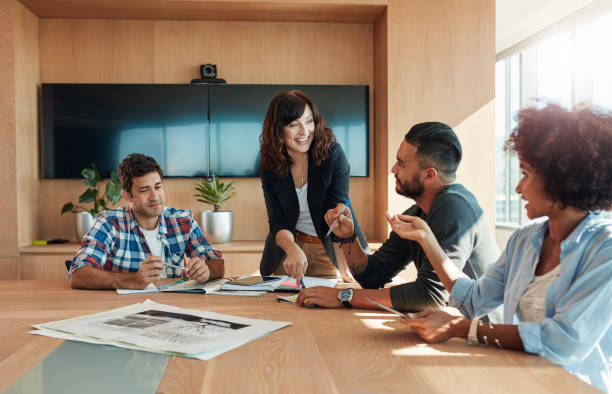Maximising productivity is a priority for many offices. An overlooked aspect of this is increasing productivity with your office design. According to recent studies, office design has a significant impact on how much work is accomplished. As a result, this has a direct impact on the productivity of the organisation. Ineffective layouts can result in a slower atmosphere, decreased mental concentration, and a terrible productive flow. This, however, can be controlled by revitalising the workplace space to promote better levels of productivity. With a few simple design updates, you can create the optimal environment to motivate staff and keep them efficient and focused.
Incorporate Open Plan AND Private Spaces
In recent years, open plan offices have become increasingly popular, and with good reason. They promote inclusions and collaboration. However, it is vital that employees have space to work effectively by themselves. If your workplace requires collaboration, a good solution is to have a variety of zones. Designing open spaces for employees to work together and also offices where they can focus quietly, will boost employee productivity. Additionally, variety in spaces promotes creativity and focus.
Encourage Movement
A crowded office can make the space feel restricted and enclosed, giving the location a cramped effect. Establishing a workspace that does not constrain staff to one area creates an efficient work environment. Incorporating open space plans can also make the place feel airier while providing staff greater freedom to connect and cooperate.
Studies show that sitting in the same position for hours can lead to a variety of medical conditions that can negatively impact both quality of life and work. To mitigate this, you could provide employees with sit-stand desks. This allows for additional movement. Furthermore, high-quality ergonomic chairs can encourage micro-movements that combat the detrimental effects of regular sitting.
Utilise Colour Psychology
The colours you choose to design your office with depends on a range of factors. For example, your brand, your industry, and the type of office you have.
Your office’s wall colours have a subconscious cognitive impact on employee behaviour. An all-white office can be dull, mechanical, and unsettling. Too much of a single hue can be overwhelming. So try to combine colour combinations that provide more for the eye to see while maintaining visual interest. Furthermore, if your company has a certain colour palette, introducing colour combinations based on that can establish your brand’s presence among your workforce.
Below are the psychological impacts in the workplace of certain colours:
Blue is widely recognised as a focussed colour. Of course, this is dependent on the type of employment you undertake. It does, however, frequently improve both relaxation and intellectual cognition.
Red is a passionate colour. It increases the flow of mental energy. However, it can be exhausting. It’s better suited to furnishings or social areas.
Yellow is a popular colour for collaborative areas because it promotes positivity and energy.
Orange has the ability to stimulate the mind and make you cheerful. It works best when emphasising your design features.
White is associated with cleanliness. However, it can be bland and boring.
Green is a calming and balancing colour. According to studies, it can also boost your creativity levels.
Adding greenery to your office boosts employee wellbeing and productivity. This could be in the form of pot plants, vases of flowers or even a green wall.
Ultimately, updating your office design can effectively boost employee productivity.



